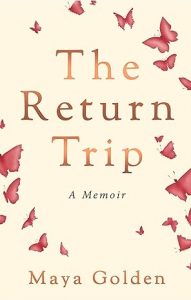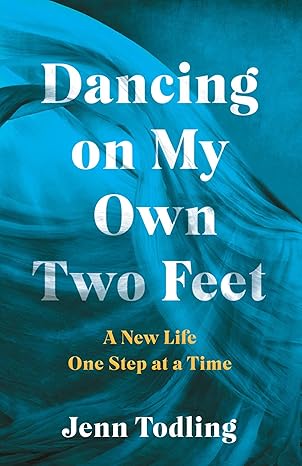The Physical Decomposition of Writing a Memoir
The Physical Decomposition of Writing a Memoir
 I aim my nipple draped in tissue paper at the line on the white plastic. The sensitive nerves in my breast respond to the cold against my skin with a tightening. I smell the woody scent of musk as I raise my arm. I forgot to put on deodorant.
I aim my nipple draped in tissue paper at the line on the white plastic. The sensitive nerves in my breast respond to the cold against my skin with a tightening. I smell the woody scent of musk as I raise my arm. I forgot to put on deodorant.
“Inhale,” says the woman on the other side of the room. She is shielded behind plexiglass, zones marked with white tape on the floor, and yellow wall signs warning of radiation.
“Hold,” she directs. The deep intake of breath is locked in my chest, my stomach concave, air passages suspended like a hornet hovering near its nest as I hold, hold, hold the breath.
Holding my breath is difficult. For so long, holding my breath signaled panic. Holding my breath meant waiting for the violations to pass.
“Exhale.”
My belly expands but my shoulders remain hunched near my ears.
“Turn and face the machine.” She moves from behind the questionable partition in the room and stands beside me. Lowering the plastic board and shifting it over to the right, she cranks a small handle until the line is between my breasts.
“Can you drop your shoulders for me?”
Can I? She gently pushes me forward, tits to technology, and she returns to her safe domain and computer.
We move through the business of inhaling, holding, and exhaling again. The beating of my heart is faster though I’ve only arched my back and shuffled my feet a few steps.
“Great, all done. You can get dressed and return to the exam room across the hall.”
When the door closes behind her, I slide on my hoodie, feeling dampness in my armpits breathing a wilder, pungent odor.
Too many minutes later, the door opens to the exam room, a loud rustling and a blur of a white coat startling me from my trance of scrolling on Tumblr. It’s the nurse practitioner, a short gray-haired woman, who, like me, is the only other person in the family medical practice office wearing a mask.
“Maya! It’s been a little while since we’ve seen you.”
“Yes,” I turn my pale blue, three-ply half-shielded face into my arm out of habit. The chorus of coughs begin anytime I haven’t used my voice for several minutes or hours.
“You’re usually here pretty often with,” she gestures over her chest and then nose, “this stuff.”
“I know.” I’ve been sick with respiratory infections every three months or so since I was nine years old.
***
The first violation of my body happened when I was molested at age five by a relative. As it continued over the years into my preteens, my young body became a tally sheet for each trespass—a relative, the older boy across the street, a group of boys on a trip with my family. Those tallies attached to my muscles like tendons and snaked their way around the vertebral arteries to my brain like leeches. My immune system dwindled like a bread loaf unable to rise.
Even when I was cuddling my green Good Luck Care Bear, inserting and rewinding the tape on my Teddy Ruxpin, peddling on my Huffy Bike with the pink streamers, my body was still carrying the trauma like a purse, then a suitcase, to all the haunts of my childhood. It wasn’t until I began writing my memoir, I realized how much pain was in the storage unit called my body.
I was diagnosed with Post-Traumatic Stress Disorder (PTSD) in 2013, three months after my first child, my son, was born. Postpartum depression exacerbated symptoms that had always been, like a shadow on a cloudless day. PTSD occurs in people who have experienced or witnessed a traumatic event and the symptoms include hyperarousal (trouble sleeping, nightmares, triggers for memories of the traumatic event), a low self-value or extreme feelings of unworthiness, and agitation. Hypervigilance kept me constantly checking my son’s diaper for any wetness or worse. I steamed and sanitized bottles that had already been steamed and sanitized. I’d expected that my efforts of breast feeding, creaming sweet potatoes and avocado and playing Mozart around the house would be enough for my newborn—he would have no reason to cry because I was prepared to be the perfect mother.
He cried with a full belly, with a clean diaper, and when I put him down for more than five minutes. As the octave of his crying moved the meter levels to red, distress spiraled into familiar thoughts of failure and hopelessness. Compounded by sleepless nights that lasted until his first peaceful night of rest at 13 months, I began to have angry outbursts. My primary target was my husband.
No previous counselors or therapists had looked beyond my Maya-created storm forecast of daily strife and anxiety and into the clear visibility of childhood trauma. In 2021, a new term was applied to the black hole seeking validation and perpetual feelings of being nothing more than a marionette for anyone who crossed my path—Complex PTSD (CPTSD). CPTSD symptoms result when a person has experienced multiple traumatic events or prolonged exposure to trauma. I was sexually abused as a child for six years.
The diagnosis of cPTSD aligned one month after I signed my publishing deal for my memoir. The emotional seesaw thrust me from highs to lows just as a series of physical ailments began to attack my body. Even antibiotics and steroid shots were useless at times as the physical trauma manifested like the Count of Monte Cristo to avenge the infections.
The decision to write a memoir about sexual trauma and my recovery from sex and porn addiction, had been the probscription for healing. Sex addiction is characterized by persistent, intense, sexually-arousing fantasies and urges that cause distress and impair a person’s professional, social and personal life (Kotera and Rhodes, Sexual Addiction and Compulsivity, 2019).
Porn addiction is the compulsion to view porn, despite trying to stop or a desire not to. Access to porn has become increasingly easier for addicts. In 2019, PornHub recorded 115 million visits a day.
The early introduction to sex as a child through years of sex abuse had resulted in an adult coping mechanism of adult content en masse.
Writing the memoir, I put myself in the position to open the steel enforced vault built around my past with a blow torch and welding hood in the name of authentically telling my story. I was opening old wounds and the bleeding sores were being put on the page.
This bout with bronchitis hit harder than usual due to two special events in two days hosted by the 1 in 3 Foundation, the non-profit organization I established to provide counseling and support services to survivors of sexual trauma. The events were shoe-horned between meetings with the school to request more resources for my son and deadlines with my publisher.
My first draft of my memoir was living the events detailed in the book. The second draft began when I decided I would tell my story and started writing. Revisions, copy edits, submissions for feedback to beta readers, querying and rejections, were drafts three, four, five and six. Every rejection left me curled in a fetal position on the bed with the curtains drawn. How can you not take it personally when every word you have written is about you?
My way was to dig in, fight harder. I postured at my desk like Rodin’s Thinking Man, in fight mode. Pain grew from the strain in my neck. Numbness formed in my lips and an aching in my jaw made chewing food painful from grinding my teeth as I typed away. Sometimes a headache would set in or my back would throb, a searing burning sensation running through me.
Everytime I opened my laptop, my body and brain felt every description. I was five years old again. In my writing process, I relived the hands on my body; hands on a child’s parts no teen or adult should touch. Hands never granted consent from a mind that only wanted to watch Punky Brewster.
It brought about an all too familiar feeling that my body welcomed back: stress and sickness. It brought me back to the doctor’s office for the second time in six weeks.
“Let’s take a look at your X-ray.” The nurse practitioner sits on a round rolling stool and glides across the room, stopping herself with her hands on the edge of the computer desk. The keyboard clacks twice from the pushing of each button and the added tapping from her long nails.
She turns the monitor towards me. A black and white image with ghostly rib cages is displayed. There are two outlines of sack-like masses behind the cadaverous bones.
“You see these?” She points to little markings along the path of the bronchial tubes between my lungs. As I lean closer, each speck has branches, like snowflakes inside my chest.
“Those crystal patterns are what we see with bronchitis. It’s not cancer. No signs of pneumonia. Just those pretty little dots.”
“Snowflakes,” I whisper.
“I’m sure it doesn’t feel very pretty.”
For me, this is another remnant of a portion of my life I did not ask for. Respiratory problems crashed down on me like I was trying to reach the surface waters beneath a waterfall. A 2015 study found that illnesses such as COPD (Chronic Obstructive Pulmonary Disease), chronic bronchitis, and emphysema appeared fourfold in study participants with PTSD.
Asthma and lower oxygen levels have also been listed as side effects of PTSD.
Boston University researchers found that PTSD and chronic severe stress are damaging for physical health, and women with PTSD are more likely to have upper respiratory infections.
While mapping out every detail of my abuse, my PTSD symptoms surged as if jolted by lightning. There was no catharsis, only growing concern. What will people think? Many of my best friends and family didn’t know I was a sex addict. My fears and disorder brought something new to my body, between my struggling lungs right to the center of my chest. This time it was in my heart.
***
My counselor had demanded I see a cardiologist.
I had tightness in my chest along with shortness of breath. I was now 41 and despite a strict fitness and healthy eating routine, I understood I needed to rule out every concern.
I went to the hospital and met with the cardiologist in November 2021, almost a month after signing my publishing deal.
“Is there anything causing you distress?,” the doctor asked. Empathetic eyes looked into mine as I gripped the vinyl of the exam table and shifted my butt from side to side causing the paper to crunch underneath me.
I told him about the memoir.
I explained that two weeks prior I had spent an entire day working for more than four hours on a chapter without a break, not even to eat. That night as I prepared to take a bath, the walls of my bedroom became pixelated, then the carpet, before I crashed down onto it, my cheek slamming against the threads. I hadn’t broken a bone, hadn’t passed out. I was dizzy and overwhelmed. It was my husband who helped me up and to the bed when he found me some time later.
“I’m struggling,” I admitted.
He prescribed a beta blocker, propranolol, and advised when writing about a traumatic event, I take it before or afterwards to ease my body’s physiological response. Propranolol has been prescribed to sexual assault survivors in the immediate aftermath of the trauma to reduce the longterm physical and mental impact—to limit the symptoms of PTSD.
I aced an exercise treadmill test. My results were in the ninety-first percent for my age. My heart was more than healthy. I was experiencing panic attacks from repressed memories and emotions. The vault had opened and unleashed ghouls and demons seeking their pound of flesh from my central nervous system. Through my nightmares, my mind tossed me into rooms with my abusers. I relived family fights from my outcry, feeling helpless, strangled and muted. I woke up with a mouth as dry as a Texas creek bed in August and was unable to return to sleep.
As I spent my days writing about sex chat and tapping into the emotions of those highs, I went chasing them again. I had an online relationship with a man that my counselor defined as narcissistic abuse. I found a monster.
New traumas to add to the old.
***
“Let’s see if we can get you feeling better this time!” The nurse practitioner’s eyes seem to smile above the N-95, the same color as her white hair.
“Yes. Let’s.”
So, with an inhaler, eucalyptus essential oil diffuser for the corner of my bedroom, and a nightstand covered with cough drops and a z-pack, we tried again.
Despite the pain, I have no regrets about writing my memoir. I learned that even when we’ve done the mental health work (I run a nonprofit to help with interventions), revisiting the past can have significant emotional, mental and physical consequences.
Stories, even the most difficult, deserve a space to be seen and heard. I learned to brace for memories of trauma while battling PTSD as I would for a hurricane: assemble the tools I need, give myself grace, and be ready if the light goes out. Prepare for a storm.
. The weather is warming as we enter the week of spring temperatures we will enjoy in Texas before the searing summer heat begins. As the temperatures rise my snowflakes remain unmelted within me. Sometimes, there is beauty even in the pain.
—
Maya Golden is an Associated Press-winning and Emmy-nominated multimedia journalist. She is the winner of the Excellence in My Market Award from the National Academy of Television Arts and Sciences and the founder of the 1 in 3 Foundation, a non-profit organization that provides recovery and counseling resources to survivors of sexual trauma with little to no income in East Texas. Maya has been featured on Bally Sports, Fox Sports College, ESPN 2 and 3 and other broadcast mediums including Blackgirlnerds.com and Salon. She speaks as a survivor for organizations such as the Children’s Advocacy Center, Court Appointed Special Advocates and Kids Aspiring to Dream. The Texas A&M alum’s career includes experience as a sports anchor/reporter and television production editor, newscast writer, field producer and print writer. She is a member of the Writer’s League of Texas, Women’s Fiction Writers Association and the East Texas Writers Guild.
THE RETURN TRIP
 At age thirty, Maya Golden was living a charmed life. She was an award-winning sports reporter, a loyal wife, and a new mom. Privately, she was battling addiction, perfectionism, dissociation disorders, and rage due to sexual abuse endured at the hands of her cousin and many other predators.
At age thirty, Maya Golden was living a charmed life. She was an award-winning sports reporter, a loyal wife, and a new mom. Privately, she was battling addiction, perfectionism, dissociation disorders, and rage due to sexual abuse endured at the hands of her cousin and many other predators.
But Maya wants to change. So, on a family road trip back to her Texas hometown, she is ready to put an end to the secrets that threaten her marriage and her career. Three separate moments of divine intervention ultimately saved Maya’s life.
From a suicide plan to the treatment facility to launching a nonprofit organization — Maya’s story chronicles and dissects her journey to find purpose out of the trauma.
BUY HERE
Category: On Writing




























